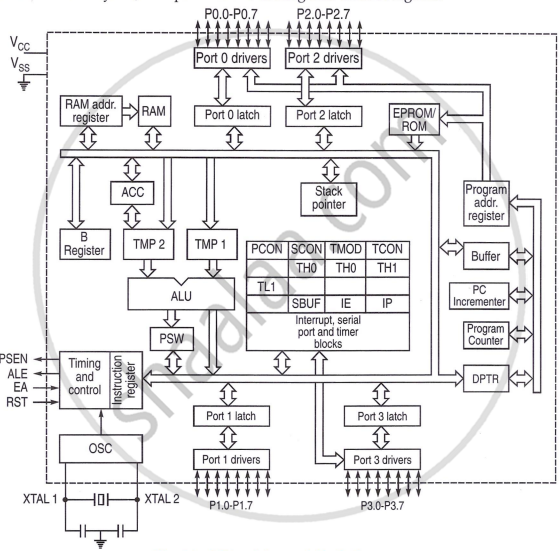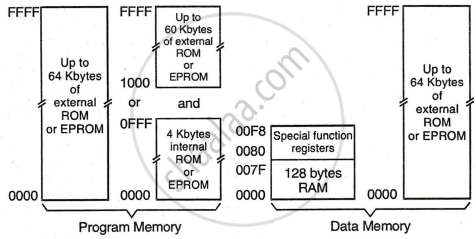Topics
Introduction to Microprocessors and Organization of 8085
Instruction Set and Programming of 8085
Introdcution to Inted X-86 Family
Introduction to Microcontroller
Networking Technology
- Introduction to Networking
- Types of Networks
- Multiplexing
- Study of Transmission media
- Coaxial cable (Cable Media)
- Twisted pair cable
- Fiber Optic Cable
- Unbounded (Wireless) Media
- Access Methods
- Network Topologies
- Ethernet (Network Architectures)
- Token-Ring (Network Architectures)
- Internet protocols
- Introduction to connectivity devices
- Major Features
- Architectural Block Diagram
- 8051 Memory Register Map
8051 Microcontroller
Major Features
- An 8 bit ALU
- 4 k x 8 ROM (or EPROM)
- 128 x 8 RAM
- Dual 16 bit timer event counter
- 32 I/O lines (Four 8-bit I/0 ports)
- Addresses 64 k bytes of program memory
- Full - featured serial port
Architectural Block Diagram
The 8051 microcontroller uses 32 pins for its four 8-bit input/output ports, and eight more pins for power, connecting to a clock crystal, and providing timing and control signals. The core components of the microprocessor, like the ALU, accumulator, stack pointer, and a set of general-purpose registers, are all connected to an internal 8-bit data bus. Each I/O port is linked to the internal data bus through registers that store data during I/O operations and control the ports. Additionally, the microcontroller has built-in ROM and RAM for storage and processing.

8051 Memory Register Map
The 8051 microcontroller addresses two memory spaces: program memory and data memory. Program memory is read-only, storing instructions that can be fetched but not written to or modified by the processor. The internal ROM is part of this space. Data memory, where internal RAM resides, is read-write, allowing the processor to store and manipulate data, but not execute instructions. The 8051 has 128 bytes of internal RAM for general storage and 22 special function registers outside this RAM. Program memory can be expanded from 4KB to 64KB, and external RAM up to 64KB can be added. In some cases, the 8051 can use combined memory for program and data storage, enabling downloaded programs to be executed directly from memory.

